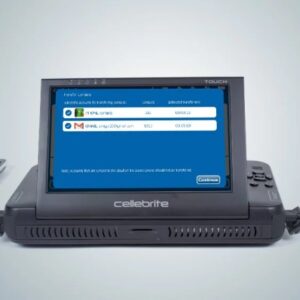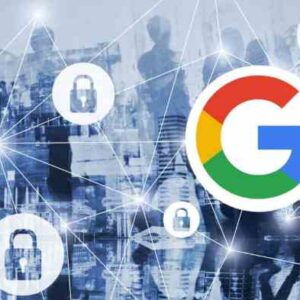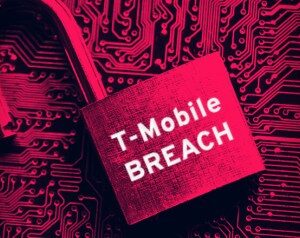Understanding IoT development isn’t just about connecting devices; it’s about orchestrating a symphony of data. This guide dives deep into the core components, from the tiny sensors collecting information to the powerful cloud platforms analyzing it, offering a comprehensive look at the hardware, software, security, and data analysis aspects crucial for building successful IoT applications. We’ll explore everything from choosing the right microcontroller to designing secure communication protocols, demystifying the process for both beginners and seasoned developers.
We’ll unravel the complexities of embedded systems programming, comparing popular languages like C, C++, and Python. You’ll learn how to integrate your creations with cloud platforms like AWS IoT Core or Azure IoT Hub, and discover the best practices for securing your devices against cyber threats. Finally, we’ll show you how to visualize and interpret the wealth of data your IoT system generates, extracting valuable insights that can transform your business or simply enrich your projects.
Defining IoT Development
IoT development isn’t just about connecting things to the internet; it’s about creating intelligent, interconnected systems that gather data, analyze it, and trigger actions—all autonomously. It’s the magic behind smart homes, connected cars, and industrial automation. Think of it as giving inanimate objects a voice and a brain.
Core Components of an IoT System
A typical IoT system comprises several key elements working in harmony. These include the things themselves (the sensors, actuators, and devices), the network infrastructure connecting them, a cloud platform for data storage and processing, and applications that interpret the data and allow users to interact with the system. The seamless interplay of these components is crucial for a successful IoT implementation. For example, a smart thermostat relies on sensors to measure temperature, a network to transmit that data to a cloud server, a processing system to compare it with user preferences, and an app to allow users to adjust settings remotely.
Types of IoT Devices and Their Functionalities
IoT devices come in various shapes and sizes, each designed for a specific purpose. Sensors gather data—temperature, humidity, pressure, light, motion, etc.—while actuators respond to commands, controlling things like lights, motors, or valves. Wearable devices track health metrics, while smart home appliances automate household tasks. Industrial IoT (IIoT) devices monitor equipment performance in factories, enabling predictive maintenance and optimizing processes. Consider a smart speaker: it’s a device with microphones (sensors) that capture your voice, a processor to interpret your commands, and speakers (actuators) to play your music.
Examples of Common IoT Applications Across Various Industries
The applications of IoT are vast and constantly expanding. In healthcare, wearable sensors monitor patients’ vital signs, alerting medical professionals to potential issues. In agriculture, smart irrigation systems optimize water usage based on soil moisture levels. In transportation, connected cars provide real-time traffic updates and enhance safety features. Retailers use IoT to track inventory levels and optimize supply chains. These are just a few examples highlighting the transformative power of IoT across diverse sectors. Imagine a farmer using sensors to monitor crop health, automatically adjusting irrigation based on real-time data, resulting in increased yields and reduced water waste.
Comparison of IoT Communication Protocols, Understanding iot development
Different IoT protocols cater to specific needs regarding bandwidth, power consumption, and security. The choice of protocol often depends on the application’s requirements.
| Protocol | Data Rate | Power Consumption | Security |
|---|---|---|---|
| MQTT | Low to Medium | Low | Good (with TLS) |
| CoAP | Low to Medium | Low | Good (with DTLS) |
| HTTP | Medium to High | Medium to High | Good (with HTTPS) |
Hardware Aspects of IoT Development
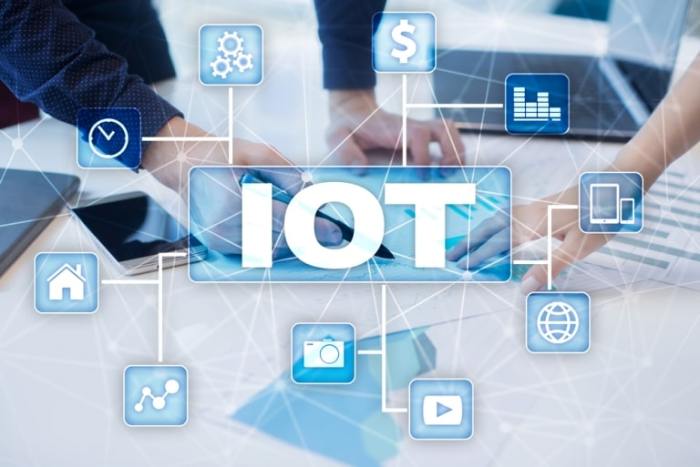
Source: thepeoplewhoshare.com
Building a functional IoT device isn’t just about clever code; it’s about choosing the right physical components that can withstand the real world. From the tiny brain powering your device to the sensors gathering data, the hardware is the foundation of any successful IoT project. Getting this right means a device that’s reliable, efficient, and ready to tackle whatever you throw at it.
Essential Hardware Components for IoT Devices
The core components of most IoT devices are surprisingly straightforward. You’ll need a microcontroller, sensors to gather data from the environment, a power source, and a way to communicate with the outside world. Let’s break down each part. Think of it like building a tiny, super-smart robot: it needs a brain, eyes (sensors), energy to run, and a way to talk to you.
Microcontrollers in IoT Devices
Microcontrollers are the brains of the operation. They’re tiny computers on a single chip, handling the processing, memory, and input/output functions of your IoT device. The choice of microcontroller depends heavily on the project’s complexity and power requirements. Factors to consider include processing power (measured in MHz), memory (RAM and Flash), power consumption, and the availability of supporting libraries and development tools. For example, a simple temperature sensor might only need a low-power microcontroller like an ESP8266, while a more complex device requiring image processing might demand a more powerful ARM-based microcontroller.
Sensors in IoT Projects
Sensors are the eyes and ears of your IoT device, gathering data from the environment. There’s a vast array of sensors available, each designed to measure specific things: temperature, humidity, light, pressure, motion, etc. Selection criteria include accuracy, resolution, power consumption, interface type (e.g., I2C, SPI, analog), and cost. For instance, a high-precision temperature sensor might be crucial for a medical application, while a less accurate but cheaper one would suffice for a home automation project.
A Simple IoT Device Circuit Diagram
Let’s imagine a simple temperature monitoring system. We’ll use a temperature sensor (e.g., a DS18B20) and an ESP8266 microcontroller.
The DS18B20 connects to a digital pin on the ESP8266 via a single data line. The ESP8266 provides power to the sensor. The ESP8266 reads the temperature data from the DS18B20, processes it, and then transmits it wirelessly via Wi-Fi to a cloud platform (like ThingSpeak or AWS IoT Core). Power is supplied to the ESP8266 via a USB connection or a small battery. The circuit is straightforward: the sensor’s data pin is connected to a digital pin on the ESP8266, and both share the same ground and VCC (power) lines. The ESP8266 also connects to a Wi-Fi network.
Power Efficiency in IoT Devices
Power efficiency is paramount for IoT devices, especially those battery-powered. Long battery life translates to less maintenance and reduced environmental impact. Strategies for improving power efficiency include:
- Choosing low-power components: Opt for microcontrollers and sensors known for their low power consumption.
- Using efficient power management techniques: Implement sleep modes and wake-up mechanisms to minimize power usage when the device is idle.
- Optimizing software: Write efficient code to reduce processing overhead and power consumption.
- Employing energy harvesting: Explore using solar panels or other methods to supplement or replace battery power.
For example, a smart agriculture sensor deployed in a remote field needs to operate for months on a single battery charge, demanding meticulous attention to power management.
Software Aspects of IoT Development
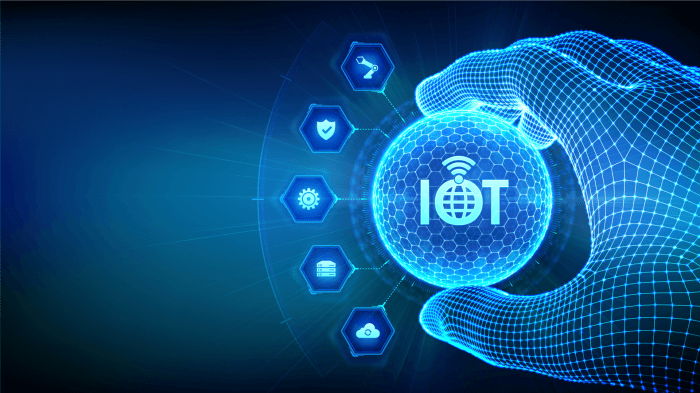
Source: maticz.com
The physical hardware is only half the battle in the world of IoT. The brains, the decision-making, and the seamless interaction with the user all rely heavily on the software side of things. This section dives into the crucial software components that breathe life into your IoT projects. We’ll explore the programming languages, frameworks, and the general process involved in bringing your IoT ideas to fruition.
Embedded Systems Programming in IoT Development
Embedded systems programming forms the bedrock of most IoT devices. These are specialized computer systems designed to perform dedicated tasks within a larger system. Think of the tiny microcontroller inside your smart thermostat – that’s an embedded system, running its own software to monitor temperature and adjust accordingly. The code running on these systems needs to be incredibly efficient, often prioritizing low power consumption and real-time responsiveness over complex features. This necessitates a deep understanding of resource management and efficient algorithm design. Developing software for these resource-constrained environments requires a different approach than traditional software development. Programmers need to be acutely aware of memory limitations, processing power constraints, and the need for robust error handling.
Programming Languages for IoT Development
Several programming languages are well-suited for IoT development, each with its own strengths and weaknesses.
- C: A classic choice, C offers excellent control over hardware and low-level operations, making it ideal for resource-constrained devices. Its efficiency and speed are unmatched, though it can be more complex to code in than higher-level languages.
- C++: An extension of C, C++ adds object-oriented programming features, providing better code organization and reusability. It retains the performance benefits of C while offering increased complexity management. However, this enhanced functionality often comes at the cost of increased resource consumption.
- Python: Known for its readability and ease of use, Python is becoming increasingly popular in IoT development, especially for prototyping and applications where rapid development is crucial. While not as efficient as C or C++, its vast libraries and frameworks often compensate for this. Its ease of use also makes it accessible to a broader range of developers.
The choice of language often depends on the specific project requirements. For extremely resource-constrained devices, C might be the best option. For projects requiring more complex software architectures, C++ might be preferred. For rapid prototyping and projects where ease of development is prioritized, Python often shines.
Common Software Frameworks and Libraries for IoT
Software frameworks and libraries provide pre-built components and tools, significantly accelerating IoT development. These tools handle many common tasks, allowing developers to focus on the unique aspects of their projects.
- Arduino IDE: A popular integrated development environment (IDE) simplifying the programming of Arduino microcontrollers, widely used in IoT projects.
- Node-RED: A visual programming tool for wiring together hardware devices, APIs, and online services. It’s particularly well-suited for rapid prototyping and connecting diverse IoT components.
- MQTT (Message Queuing Telemetry Transport): A lightweight messaging protocol ideal for connecting IoT devices to cloud platforms. Its efficiency and low overhead make it a popular choice for resource-constrained devices.
Developing a Simple IoT Application Using Node-RED
Node-RED offers a user-friendly visual approach to IoT application development. Let’s Artikel a simple application: monitoring temperature and displaying it on a dashboard.
- Setup: Install Node-RED and connect it to your hardware (e.g., a Raspberry Pi with a temperature sensor).
- Import Nodes: Add nodes for reading sensor data (e.g., a node to read data from a temperature sensor via a specific library), a node for processing the data (e.g., converting raw sensor readings to Celsius), and a node to send the data to a dashboard (e.g., a dashboard node to display the data).
- Wire Nodes: Connect the nodes visually, defining the data flow. The temperature sensor node’s output should feed into the data processing node, and its output should connect to the dashboard node.
- Deploy: Deploy the flow, and the application will begin monitoring the temperature and displaying it on the dashboard.
This simplified example demonstrates the ease of use offered by Node-RED. More complex applications would involve additional nodes and logic, but the fundamental principle remains the same: visually connect nodes to define the data flow and application logic.
Cloud Integration in IoT Development
The cloud isn’t just a fluffy white thing in the sky anymore; it’s the backbone of most modern IoT systems. Think of it as the central nervous system, collecting, processing, and storing the massive amounts of data generated by your connected devices. Without robust cloud integration, your smart fridge might be smart, but its insights remain trapped within its own limited digital confines.
Cloud platforms provide the crucial infrastructure for managing and analyzing the data stream from your IoT devices. This allows for functionalities like remote monitoring, predictive maintenance, and sophisticated data analytics that simply aren’t possible with on-device processing alone. The sheer volume and velocity of IoT data necessitates the scalability and processing power only a cloud environment can offer.
Popular Cloud Platforms for IoT
Several major players dominate the IoT cloud landscape, each offering a unique blend of services and features. Choosing the right platform depends heavily on your specific needs, including scalability requirements, data security needs, and existing infrastructure.
- AWS IoT Core: Amazon’s offering provides a secure and scalable platform for connecting billions of devices. It boasts robust features for device management, data ingestion, and analytics.
- Azure IoT Hub: Microsoft’s counterpart offers similar capabilities, tightly integrating with other Azure services like machine learning and data warehousing. Its strength lies in its enterprise-level features and robust security.
- Google Cloud IoT Core: Google’s platform emphasizes scalability and ease of use, making it a popular choice for developers familiar with the Google ecosystem. Its integration with Google’s AI and analytics tools is a key differentiator.
Connecting an IoT Device to a Cloud Platform
The process of connecting an IoT device to a cloud platform involves several key steps, each demanding careful consideration. This process is often unique to the chosen cloud provider but typically follows a similar pattern.
First, you’ll need to register your device with the cloud platform. This usually involves creating a unique identifier for each device and configuring its communication protocols (e.g., MQTT, HTTP). Next, you’ll need to establish secure communication channels between your device and the cloud, often employing techniques like TLS/SSL encryption. Finally, you’ll write the code that allows your device to send data to the cloud and receive commands from it. This involves integrating cloud-specific SDKs (Software Development Kits) into your device’s firmware. For example, you might use the AWS IoT Device SDK for an AWS-based solution.
Cloud-Based Data Storage Solutions for IoT
Storing and managing the massive data streams generated by IoT devices requires specialized solutions. Different cloud providers offer a variety of storage options, each with its own strengths and weaknesses.
- Relational Databases (e.g., SQL Server, MySQL): Suitable for structured data, allowing for easy querying and reporting. However, they can be less efficient for handling the sheer volume and velocity of unstructured IoT data.
- NoSQL Databases (e.g., MongoDB, Cassandra): Designed for handling large volumes of unstructured or semi-structured data. They offer greater scalability and flexibility compared to relational databases, making them ideal for many IoT applications.
- Data Lakes (e.g., AWS S3, Azure Data Lake Storage): Provide a centralized repository for storing raw IoT data in its native format. This allows for flexible analysis and processing without the need for upfront data transformation.
- Time-series Databases (e.g., InfluxDB, TimescaleDB): Optimized for storing and querying time-stamped data, a common characteristic of IoT data. They provide efficient data retrieval and analysis for applications requiring real-time insights.
Security Considerations in IoT Development

Source: researchgate.net
The Internet of Things (IoT) presents a massive opportunity for innovation, but it also introduces significant security challenges. Because IoT devices often operate with limited processing power and memory, and frequently lack robust security features found in traditional computing systems, securing them requires a proactive and multi-faceted approach. Ignoring security from the outset can lead to costly breaches and reputational damage.
Common Security Threats and Vulnerabilities in IoT Systems
IoT systems are vulnerable to a wide range of attacks, many stemming from inherent design limitations. These vulnerabilities can expose sensitive data, disrupt operations, and even compromise physical safety. Understanding these threats is crucial for developing robust security measures.
- Data breaches: Unauthorized access to sensitive data stored on or transmitted by IoT devices. This could include personal information, financial data, or intellectual property. A high-profile example is the Mirai botnet, which used vulnerable IoT devices to launch massive DDoS attacks.
- Denial-of-service (DoS) attacks: Overwhelming an IoT device or system with traffic, rendering it unavailable to legitimate users. The Mirai botnet is again a prime example of this, crippling internet services.
- Man-in-the-middle (MitM) attacks: Intercepting communication between IoT devices and servers to steal data or inject malicious code. This is particularly dangerous for devices that transmit sensitive information wirelessly.
- Software vulnerabilities: Exploiting flaws in the software running on IoT devices to gain unauthorized access or control. Outdated firmware and lack of regular updates are major contributors to this vulnerability.
- Weak authentication and authorization: Using weak passwords or default credentials that are easily guessed or cracked. Many IoT devices ship with easily guessable default passwords, making them prime targets for attackers.
Best Practices for Securing IoT Devices and Data
Implementing robust security measures throughout the entire IoT lifecycle is paramount. This involves securing the device itself, the communication channels, and the data stored and processed.
- Secure boot process: Ensuring that only authorized software is loaded when the device starts up, preventing malicious code from being executed.
- Strong authentication and authorization: Using strong passwords, multi-factor authentication (MFA), and role-based access control (RBAC) to restrict access to devices and data.
- Data encryption: Encrypting data both in transit and at rest to protect it from unauthorized access. This involves using strong encryption algorithms and secure key management practices.
- Regular software updates: Patching vulnerabilities promptly to prevent attackers from exploiting them. This requires a robust update mechanism and user awareness.
- Secure communication protocols: Using secure protocols such as TLS/SSL to encrypt communication between IoT devices and servers.
- Network segmentation: Isolating IoT devices from other parts of the network to limit the impact of a breach.
Secure Communication Protocol Design for an IoT Application
A secure communication protocol for an IoT application needs to consider several factors, including confidentiality, integrity, and authentication. One approach could leverage the MQTT protocol with TLS/SSL encryption. This would ensure that data transmitted between devices and servers is encrypted, preventing eavesdropping. Furthermore, the use of digital certificates would enable mutual authentication, verifying the identity of both the device and the server. The protocol could also incorporate message integrity checks to ensure that data has not been tampered with during transmission.
Authentication and Authorization Mechanisms for IoT Devices
Effective authentication and authorization are essential for securing IoT devices. Several mechanisms can be employed:
- Password-based authentication: While simple, this method requires strong password policies and regular password changes. It’s vulnerable to brute-force attacks if not properly implemented.
- Certificate-based authentication: Using digital certificates to verify the identity of IoT devices. This provides stronger security than password-based authentication but requires more complex infrastructure.
- Token-based authentication: Using short-lived tokens to authenticate devices. This reduces the risk of long-term compromise if a token is stolen.
- Biometric authentication: Using biometric data such as fingerprints or facial recognition to authenticate users. This adds an extra layer of security, but can be more expensive to implement.
Data Analytics and Visualization in IoT
The sheer volume of data generated by IoT devices presents both a challenge and an opportunity. Harnessing this data effectively requires sophisticated analytics techniques to extract meaningful insights and inform better decision-making. Visualizing this data is equally crucial, transforming complex datasets into easily understandable representations that reveal trends and patterns.
Data analytics applied to IoT data involves various techniques to process, analyze, and interpret the massive streams of information generated by connected devices. This goes beyond simple data aggregation; it delves into predictive modeling, anomaly detection, and real-time monitoring to optimize processes, improve efficiency, and even anticipate future events. For example, analyzing sensor data from a smart farm can predict crop yields, optimize irrigation schedules, and even detect early signs of disease.
Methods for Visualizing IoT Data
Effective visualization is key to understanding the wealth of information generated by IoT systems. Different visualization methods cater to different needs and data types. Choosing the right approach depends on the specific goals and the audience.
- Dashboards: These provide a high-level overview of key metrics, allowing users to quickly grasp the overall system status. They often use charts, graphs, and gauges to display real-time data and trends.
- Geographic Information Systems (GIS): When location data is involved, GIS maps are invaluable for visualizing data geographically, highlighting spatial patterns and relationships.
- Time-series charts: These are essential for tracking data changes over time, identifying trends, and detecting anomalies. Line graphs and area charts are commonly used.
- Scatter plots: These reveal correlations between different variables, helping identify relationships and dependencies within the data.
- Heatmaps: These are useful for visualizing data density across a specific area or time period, highlighting areas of high or low activity.
Sample IoT Dashboard Design
Consider a smart home security system. A sample dashboard could display the following:
| Metric | Visualization | Description |
|---|---|---|
| Number of active sensors | Gauge | Shows the number of sensors currently reporting data. |
| Recent events | Timeline | Displays a chronological list of recent events, such as door openings, motion detection, or alarm triggers. |
| Security camera feed | Live video stream | Provides a live view from security cameras. |
| Temperature and humidity levels | Line graph | Shows temperature and humidity trends over time. |
| System status | Status indicators (green/yellow/red) | Indicates the overall health and status of the system. |
Techniques for Extracting Insights from IoT Data
Extracting meaningful insights requires more than just visualization. Sophisticated analytical techniques are needed to uncover hidden patterns and predict future outcomes.
- Predictive modeling: Using machine learning algorithms to forecast future events based on historical data. For instance, predicting equipment failure based on sensor readings.
- Anomaly detection: Identifying unusual patterns or outliers in the data that might indicate problems or security breaches. This could involve detecting unusual energy consumption patterns in a smart building.
- Real-time monitoring: Continuously tracking data to identify immediate issues and trigger alerts. Example: detecting a sudden temperature spike in a server room.
- Clustering: Grouping similar data points together to identify patterns and segments within the data. This could be used to segment customers based on their smart home device usage.
- Regression analysis: Determining the relationship between different variables to understand how changes in one variable affect others. For example, determining the correlation between outdoor temperature and energy consumption.
IoT Development Lifecycle and Methodologies
Building a successful IoT product isn’t a sprint; it’s a marathon with several carefully planned stages. Understanding the lifecycle and choosing the right methodology is crucial for navigating the complexities of hardware, software, cloud integration, and security. Think of it like building a house – you wouldn’t start laying bricks without a blueprint, right?
The IoT development lifecycle, much like software development, requires a structured approach. Ignoring this can lead to costly rework, missed deadlines, and ultimately, a product that fails to meet its objectives. This structured approach helps manage the inherent complexity of integrating various technologies and ensuring a smooth, efficient process.
Stages of a Typical IoT Development Lifecycle
The IoT development lifecycle typically involves several key phases: Requirements Gathering and Analysis, Design, Development, Testing, Deployment, and Maintenance. Each phase is iterative, meaning feedback from later stages can inform earlier ones. For instance, testing might reveal design flaws that need to be addressed before full-scale deployment.
Comparing Development Methodologies for IoT Projects
Agile and Waterfall are two prominent methodologies used in software development, and both have applications in IoT projects, though Agile is often favored for its flexibility. Waterfall, with its linear, sequential approach, is suitable for projects with well-defined requirements and minimal expected changes. However, the inherent complexities and evolving nature of IoT often necessitate the iterative nature of Agile. Agile allows for adjustments throughout the development process, adapting to new insights and technological advancements. Imagine trying to build a smart home system using Waterfall – discovering a crucial hardware incompatibility late in the game would be disastrous. Agile, on the other hand, would allow for adjustments and course correction.
Managing Complexity in IoT Projects Using Agile
Agile methodologies, like Scrum, break down the project into smaller, manageable sprints. Each sprint focuses on delivering a working increment of the system. This iterative approach allows for continuous testing and feedback, reducing the risk of major setbacks. For example, in a smart agriculture project, one sprint might focus on developing the sensor network, while another might concentrate on the data processing and visualization aspects. This granular approach helps manage the inherent complexity of coordinating hardware, software, and cloud services. Regular sprint reviews and retrospectives provide opportunities to identify and address potential problems early on.
Best Practices for Successful IoT Project Management
Effective IoT project management requires a proactive approach. Here’s a checklist of best practices:
- Clearly Defined Requirements: Start with a comprehensive understanding of the project goals, target audience, and functional requirements.
- Robust Testing Strategy: Implement rigorous testing at each stage, including unit, integration, and system testing.
- Security by Design: Integrate security considerations from the outset, addressing vulnerabilities in hardware, software, and network communication.
- Scalability and Maintainability: Design the system to accommodate future growth and ensure ease of maintenance and updates.
- Data Management Plan: Establish a clear strategy for data collection, storage, processing, and analysis.
- Collaboration and Communication: Foster strong communication among team members, stakeholders, and external partners.
- Continuous Monitoring: Implement mechanisms to monitor system performance and identify potential issues after deployment.
Following these best practices helps mitigate risks and increases the likelihood of delivering a successful IoT project. Remember, the IoT landscape is constantly evolving, so adaptability and continuous learning are essential for long-term success.
Last Word: Understanding Iot Development
Building a successful IoT application requires a holistic understanding of its many interconnected parts. From the minuscule sensors gathering data to the robust cloud platforms processing it, each element plays a vital role. This guide has provided a foundational understanding of the process, highlighting the importance of secure design, efficient programming, and insightful data analysis. By mastering these core principles, you’ll be well-equipped to embark on your own IoT development journey, whether it’s for a personal project or a large-scale enterprise solution. The world of interconnected devices is vast and ever-evolving, but with the right knowledge, you can navigate it with confidence and create truly innovative applications.

